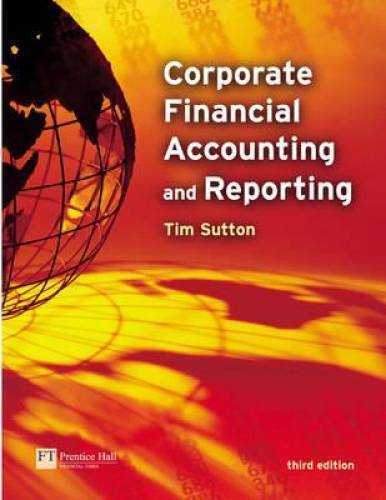Revenue recognition issues in a dotcom company ESoccer is an Internet-based media company serving soccer enthusiasts worldwide
Question:
Revenue recognition issues in a dotcom company ESoccer is an Internet-based media company serving soccer enthusiasts worldwide since its founding four years earlier in x1. It provides up-to-the-minute information on the soccer world (teams, players, games etc.) in audio and video form and sells soccer-related merchandise and memorabilia.
The company generates revenue from four main sources: advertising, e-commerce, content licensing and membership services. ESoccer charges advertisers for displaying advertisements on its websites.
It sells soccer-related products and services (e-commerce). It licenses its content (e.g. soccer news, feature articles) to third parties. Finally, for members of its ESoccerClub schemes, it offers bonus points for viewing pages and making purchases and, for additional fees, the opportunity to participate in contests with cash prizes.
The company reported total revenues of A30 million in x5, a 100% increase on the x4 figure.
Operating losses were A28 million that year, up from A19 million in x4.
Part A Advertising revenues According to the company’s statement of accounting policies, ‘advertising revenue is recognised in the period the advertisement is displayed, provided that no significant company obligations remain and collection of the resulting receivable is probable’. Company obligations typically include guarantees of a minimum number of ‘impressions’, or times that an advertisement is viewed by users of the company’s websites.
Required Suppose that ESoccer bills an advertiser A100,000 at the start of the fourth quarter of x5, based on a certain number of impressions being delivered by end-x5. Only 85% of the impressions are delivered by year-end, however. Assuming the number of impressions delivered is above the guaranteed minimum and the advertiser has not yet paid the bill, show the effect on ESoccer’s accounts of:
(a) the initial billing; and
(b) the end-year adjustment ESoccer makes to its x5 accounts.
How would your answers to
(a) and
(b) differ if the guaranteed minimum number of impressions was equivalent, in billing terms, to A90,000?
Part B Membership scheme and bonus points The company launched a points scheme in x5 for members of its ESoccerClub. Members of the club can earn points – from registering as members, spending time on the company’s websites and making purchases. For example, members can earn 10 points for every A1 spent at the company’s online store. They can then spend the points on further purchases or on special soccer-related events promoted by the company. For every 100 points earned, a member can save A1 on his or her next purchase at the company’s online store. When making purchases, a member has the choice of using points or allowing them to accumulate. Points expire two years after they are earned. The company recognises the cost of points earned when members use them. It makes a year-end adjustment in its accounts for the estimated cost of the change in unused points over the year.
Required Prepare the accounting entries ESoccer makes to record the following events in December x5.
(a) Members purchase merchandise for cash from ESoccer’s online store. The goods have a market value – before discounts – of A500,000 and cost the company A400,000. Members use 2 million previously earned points when paying for the goods.
(b) According to the company’s records, there are 20 million unused points at end-December x5. The company estimates that 16 million of these points will be used before the expiry date. Since the points scheme only began in x5, the company has not yet recognised any cost of unused points in its accounts.
Part C Barter transactions ESoccer exchanges advertising space – and content – on its web pages for advertisements on other websites as well as on TV and radio. According to the notes to the company’s x5 accounts, barter transactions accounted for 17% of total revenues in x5 and slightly higher proportions in x4 and x3.
The revenues are stated at the fair value of the services (e.g. advertising space) that ESoccer receives in exchange.
Required
(a) What would be the effect on the company’s x5 income statement if it were not permitted to recognise barter transactions in its published x5 accounts? State any assumptions you’ve made in answering this question.
(b) Barter transactions are common among media companies. For traditional media firms, barter deals are usually no more than 5% of sales. Among some start-ups, however, barter may represent half of revenues and even for established Internet companies like ESoccer, the proportion can reach 15–20%. Some investors claim that counting barter deals as revenue is fraudulent accounting. Why are investors suspicious of web-based barter transactions?
AppenedixLO1
Step by Step Answer:






